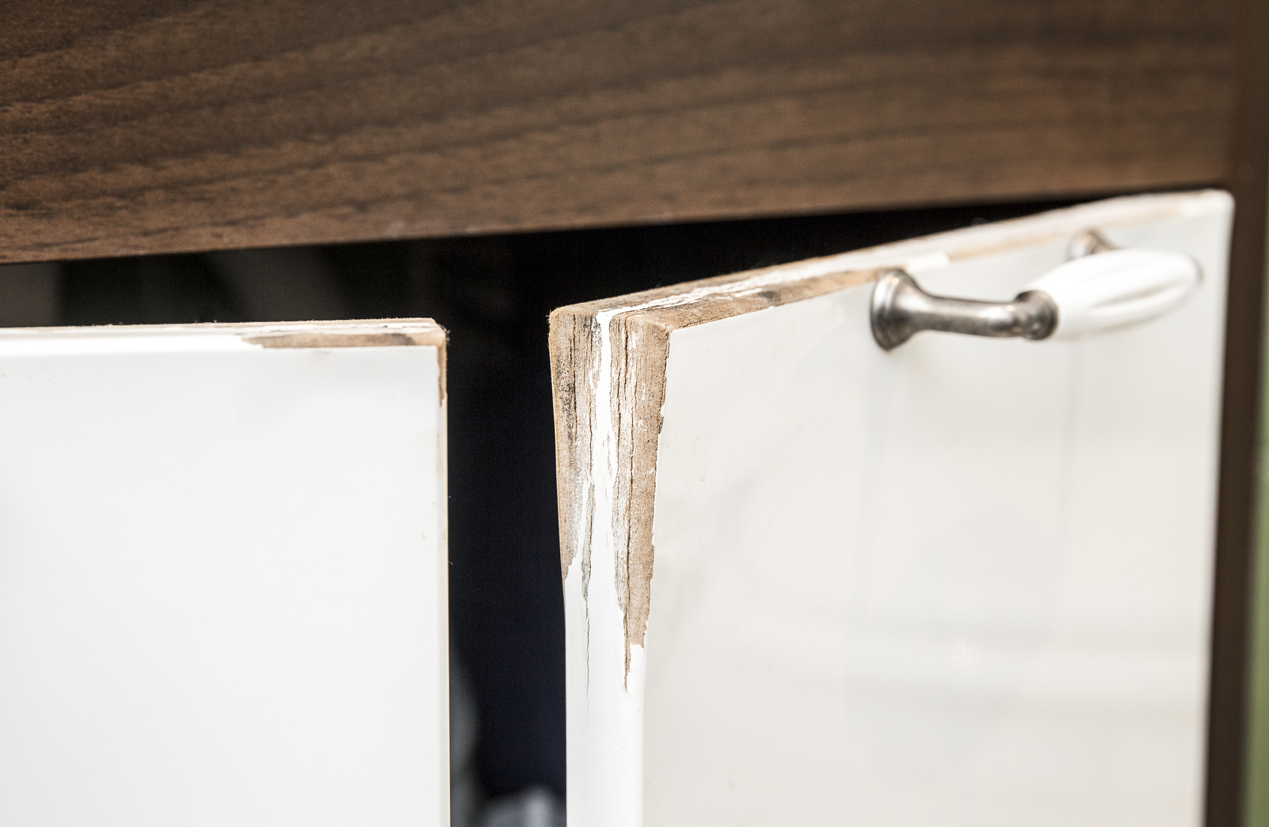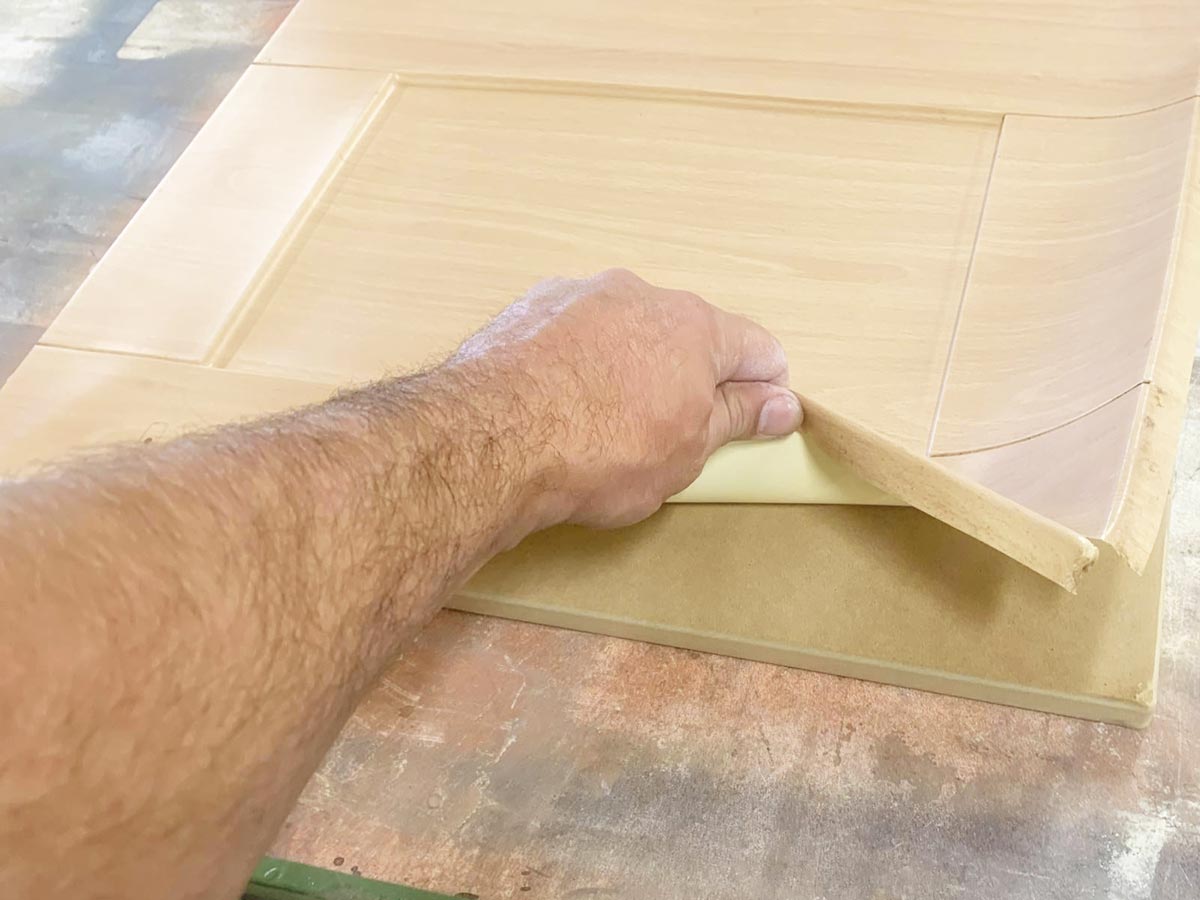Identifying the Cause of Peeling

Before you start tackling peeling cabinet doors, it’s crucial to understand why they’re peeling in the first place. Peeling paint on cabinet doors can be caused by a variety of factors, from poor paint quality to environmental conditions. By pinpointing the root cause, you can ensure a long-lasting and successful repair.
Paint Quality
The quality of the paint used on your cabinet doors plays a significant role in their durability and resistance to peeling. Low-quality paints often lack the necessary adhesion and durability to withstand everyday wear and tear.
- Oil-based paints are generally more durable and resistant to peeling than latex paints, but they can be more difficult to apply and require more drying time.
- Latex paints are water-based and easier to clean up, but they may not be as durable as oil-based paints, especially in high-traffic areas.
- Acrylic paints are a type of latex paint that offers good adhesion and durability, making them a popular choice for cabinet doors.
Improper Preparation
Proper preparation is key to ensuring a smooth and durable paint finish. If the surface of your cabinet doors isn’t properly cleaned, sanded, and primed, the paint may not adhere properly, leading to peeling.
- Cleaning: Thoroughly clean the cabinet doors with a mild detergent and water to remove dirt, grease, and other contaminants.
- Sanding: Sand the surface of the cabinet doors with fine-grit sandpaper to create a smooth surface for the paint to adhere to.
- Priming: Applying a primer helps to create a barrier between the wood and the paint, promoting better adhesion.
Moisture Damage, How to fix peeling cabinet doors
Excessive moisture can cause paint to peel and bubble. This can occur if the cabinet doors are exposed to water damage, humidity, or condensation.
- Water damage: If the cabinet doors have been exposed to water, the wood may have absorbed moisture, causing the paint to detach.
- Humidity: High humidity levels can lead to condensation, which can trap moisture between the paint and the wood, causing peeling.
- Condensation: Condensation can occur on cabinet doors in areas with high humidity or temperature differences.
Age
Over time, paint can naturally degrade and lose its adhesion. This is especially true for older cabinet doors that have been exposed to years of wear and tear.
- Sun exposure: UV rays from the sun can cause paint to fade and become brittle, leading to peeling.
- Temperature fluctuations: Extreme temperature changes can also cause paint to expand and contract, weakening its adhesion.
- Wear and tear: Everyday use can also contribute to paint peeling, especially in areas that are frequently touched or bumped.
Identifying the Cause
To identify the cause of peeling, carefully inspect the cabinet doors and consider their history.
- Visual inspection: Look for signs of water damage, such as warping or discoloration. Check for areas where the paint is peeling in large patches or only in specific areas.
- History: Consider the age of the cabinet doors, the type of paint used, and the environmental conditions they have been exposed to.
Preparing for Repair

Before you start painting, it’s crucial to prepare your cabinet doors for a smooth and long-lasting finish. This involves cleaning, sanding, and patching any damaged areas. Proper preparation ensures the paint adheres well and hides any imperfections, leading to a professional-looking result.
Surface Preparation
Preparing the surface of your cabinet doors is essential for achieving a smooth and even paint finish. This step ensures that the paint adheres properly and lasts longer.
- Cleaning: Begin by cleaning the cabinet doors with a mild detergent and water. This removes dirt, grease, and any residue that might hinder paint adhesion. Make sure to dry the doors thoroughly before proceeding.
- Sanding: Sanding helps to create a smooth surface for the paint to adhere to. Use fine-grit sandpaper (120-180 grit) to lightly sand the entire surface, paying attention to any rough spots or imperfections. Sanding also helps to remove any loose paint or debris.
- Patching: If there are any holes or cracks in the cabinet doors, use wood filler to patch them. Allow the filler to dry completely before sanding it smooth with fine-grit sandpaper.
Gathering Tools and Materials
Having the right tools and materials makes the repair process more efficient and effective. Here’s a list of essential items you’ll need:
- Sandpaper: Use various grits of sandpaper, starting with coarser grits (80-120) for removing loose paint and ending with finer grits (180-220) for smoothing the surface.
- Paint scraper: A paint scraper is helpful for removing loose paint, especially from stubborn areas. Choose a scraper with a comfortable grip and a sharp blade.
- Primer: Primer helps to create a smooth, even surface for the paint to adhere to. Choose a primer specifically designed for wood or cabinets.
- Paint: Select a high-quality paint that is suitable for cabinets and matches your desired color. Consider using a paint with a satin or semi-gloss finish for durability and easy cleaning.
- Paint brushes: Use brushes specifically designed for paint, such as angled brushes or foam brushes. Choose brushes with the appropriate size for your cabinet doors.
- Paint roller: If you’re painting large areas, a paint roller can help to speed up the process. Choose a roller with a nap length suitable for the surface you’re painting.
- Drop cloths: Protect your work area from paint spills and splatters by using drop cloths. Choose a material that is durable and easy to clean.
- Masking tape: Use masking tape to protect areas you don’t want to paint, such as hardware or adjacent surfaces. Choose a tape that is easy to remove and doesn’t leave residue.
- Paint thinner: Use paint thinner to clean your brushes and rollers after painting. Follow the manufacturer’s instructions for proper use and disposal.
Repairing and Repainting: How To Fix Peeling Cabinet Doors

Now that you’ve identified the cause of the peeling and prepped your cabinet doors, it’s time to get down to the business of repair and repainting. This process will breathe new life into your cabinets, giving them a fresh, durable finish.
Removing Peeling Paint
Removing the peeling paint is the first step to a smooth and even finish. There are a few methods you can use, each with its own advantages and disadvantages.
- Scraping: For larger areas of peeling paint, a scraper can be an efficient tool. Use a putty knife or a paint scraper, working gently to avoid damaging the underlying wood. This method is best for loose paint that comes off easily.
- Sanding: For smaller areas or for smoothing out rough edges after scraping, sanding is a good option. Start with coarse-grit sandpaper and gradually work your way to finer grits to achieve a smooth surface. Be careful not to sand too deeply, as this could damage the wood.
- Chemical Strippers: If you have stubborn layers of paint, a chemical stripper can be a good option. Apply the stripper according to the manufacturer’s instructions, allowing it to work for the recommended time. Use a scraper to remove the softened paint, then neutralize the stripper with water. Be sure to work in a well-ventilated area and wear gloves and eye protection when using chemical strippers.
Applying Primer and Paint
Once the peeling paint is removed and the surface is clean and dry, you’re ready to apply primer and paint.
- Primer: Primer helps to create a smooth, even surface for the paint to adhere to. It also seals the wood and prevents the paint from staining. Choose a primer that is compatible with the type of paint you will be using.
- Paint: For cabinet doors, choose a high-quality paint that is durable and easy to clean. Consider using a paint specifically designed for cabinets or trim. Choose a paint that complements the style of your kitchen and your personal taste.
- Applying Multiple Coats: Apply the primer in thin, even coats, allowing each coat to dry completely before applying the next. Once the primer is dry, apply the paint in the same manner. Two or three coats of paint are typically needed for a durable and even finish.
Achieving a Smooth and Even Finish
To achieve a professional-looking finish, it’s important to pay attention to detail when applying primer and paint.
- Sanding Between Coats: Sanding between coats helps to create a smooth, even surface for the next coat of paint. Use fine-grit sandpaper to lightly sand the surface, removing any imperfections or brush strokes.
- Paint Roller or Brush: For large areas, a paint roller is the most efficient way to apply primer and paint. Use a high-quality roller with a nap that is appropriate for the surface. For smaller areas or detail work, use a paintbrush.
How to fix peeling cabinet doors – Nah, kalo pintu lemari kamu lagi ngelupas, jangan langsung panik! Bisa diatasi kok, asal sabar. Tapi, kalo kamu lagi pengen nge-refresh suasana kamar kost, mendingan baca dulu nih tips dekorasi kamar kost. Biar kamar kost kamu makin kece! Eh, balik lagi ke pintu lemari, kamu bisa coba pakai cat khusus kayu buat nge-cover bagian yang ngelupas.
Gampang kan?
Nah, daripada bengong ngeliatin pintu lemari yang ngelupas, mendingan main game dekorasi kamar aja, biar mood-nya naik! Banyak ide keren buat ngerias kamar di bedroom decoration games for girls , bisa jadi inspirasi buat ngebenerin pintu lemari juga. Soalnya, kalo kamar udah kece, pasti semangat deh ngeberesin pintu lemari yang ngelupas itu!
